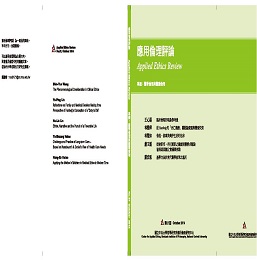今之醫學,以自然科學與技術為典範的量性方法之建構,在某種程度的精確性及普遍必然性的優勢之下,直指人生命之健全。只是面對人生命本身難以確切掌握之變數,縱使醫學科學為人類帶來莫大利益,卻也充滿著「不確定性」!因此,「科技化」的醫學在帶來人類前所未有之福利的同時,卻也導致人與其存在的疏離。筆者觀視先秦墨者在其當時代提出以兼愛為核心的實踐理念,以「法儀」、「三表法」作為實踐之基準,化百姓朝不保夕的不確定性而成就共同福祉之確切幸福。本文即試圖借鏡先秦墨者之行,思索墨學方法於當今之轉化,以解決醫學科學的不確定性以及與人自身的疏離。其中有一重要的因素,即「情境的建構」;這在墨學方法中可見其端倪。
Modern medicine constructing with quantitative method in the paragon of natural science and technology is directly referred to the good health of human life nowadays under a certain degree of the superiority of precision and universal necessity. Facing the variation of human life itself, it is hard to diagnose precisely, despite the fact that medical science has brought great benefits to human. There is still full of "uncertainty." Although medicine scientized by natural science and technology benefits to human unprecedentedly, it leads to alienation of person from her/his being. The author takes a view from Mohists in ancient Qin Dynasty to propose love without-distinction as the core of practicing idea and "Standards" and "Three Tests" as the rules of practice to transform people’s experience from uncertainty of precarious living to achieve a certainty of common welfare. The paper attempts to learn from Mohists' practices in ancient Qin Dynasty and to think about transforming the method of Mohism in contemporary society in order to solve the uncertainty and person's alienation from her/his being in medical science. It is the "situation constructing" that indicates an important element among the solutions and it will be found as a clue in the method of Mohism.
